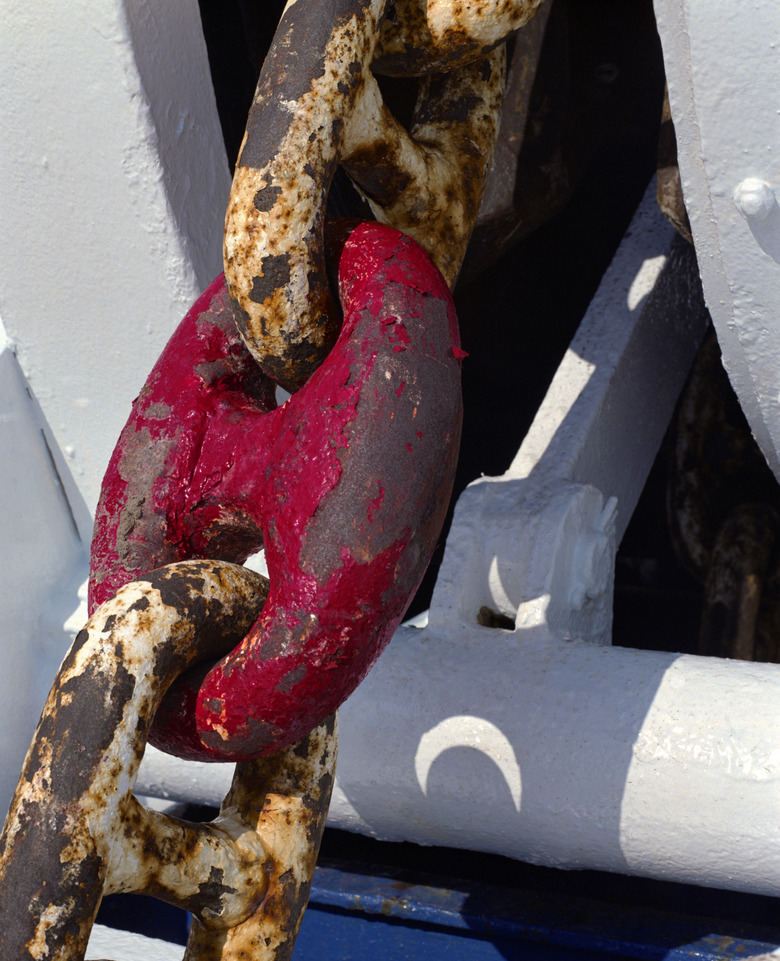Do Metal Atoms Lose Their Valence Electrons When Forming Ionic Compounds?
Metal atoms lose some of their valence electrons through a process called oxidation, resulting in a large variety of ionic compounds including salts, sulfides and oxides. The properties of metals, combined with the chemical action of other elements, results in the transfer of electrons from one atom to another. Although some of these reactions have undesirable results, such as corrosion, batteries and other useful devices also depend on this type of chemistry.
Metal Atoms
Metal Atoms
One of the distinguishing features of metal atoms is the looseness of their outer electrons; because of this, metals are generally lustrous, good conductors of electricity, and can be formed and shaped fairly easily. By contrast, non-metals such as oxygen and sulfur have tightly-bound electrons; these elements are electrical insulators and brittle as solids. Because of the looseness of the electrons surrounding metals, other elements "steal" them to form stable chemical compounds.
Octet Rule
Octet Rule
The octet rule is a principle used by chemists to determine the proportions in which atoms combine to form chemical compounds. Simply put, most atoms become chemically stable when they have eight valence electrons; however, in their neutral state, they have fewer than eight. An element such as chlorine, for example, is normally missing one electron, but noble gases such as neon have the full complement, so they rarely combine with other elements. For chlorine to become stable, it can remove an electron from a nearby sodium atom, forming sodium chloride salt in the process.
Oxidation and Reduction
Oxidation and Reduction
The chemical process of oxidation and reduction describes how non-metals remove electrons from metals. Metals lose electrons and thereby become oxidized; non-metals gain electrons and become reduced. Depending on the element, a metal atom can lose one, two or three electrons to one or more non-metals. Alkali metals such as sodium lose one electron, whereas copper and iron may lose up to three, depending on the reaction.
Ionic Compounds
Ionic Compounds
Ionic compounds are molecules that form through the gain and loss of electrons. A metal atom that loses an electron takes on a positive electric charge; a non-metal that gains an electron becomes negatively charged. Because opposite charges attract, the two atoms stick together, forming a strong, stable chemical bond. Examples of ionic compounds include snow-melting salt, calcium chloride; rust, which combines iron and oxygen; copper oxide, the greenish corrosion that forms on buildings and sculptures — and lead sulfate, a compound used in car batteries.
Cite This Article
MLA
Papiewski, John. "Do Metal Atoms Lose Their Valence Electrons When Forming Ionic Compounds?" sciencing.com, https://www.sciencing.com/metal-atoms-lose-valence-electrons-forming-ionic-compounds-23562/. 24 April 2017.
APA
Papiewski, John. (2017, April 24). Do Metal Atoms Lose Their Valence Electrons When Forming Ionic Compounds?. sciencing.com. Retrieved from https://www.sciencing.com/metal-atoms-lose-valence-electrons-forming-ionic-compounds-23562/
Chicago
Papiewski, John. Do Metal Atoms Lose Their Valence Electrons When Forming Ionic Compounds? last modified March 24, 2022. https://www.sciencing.com/metal-atoms-lose-valence-electrons-forming-ionic-compounds-23562/
